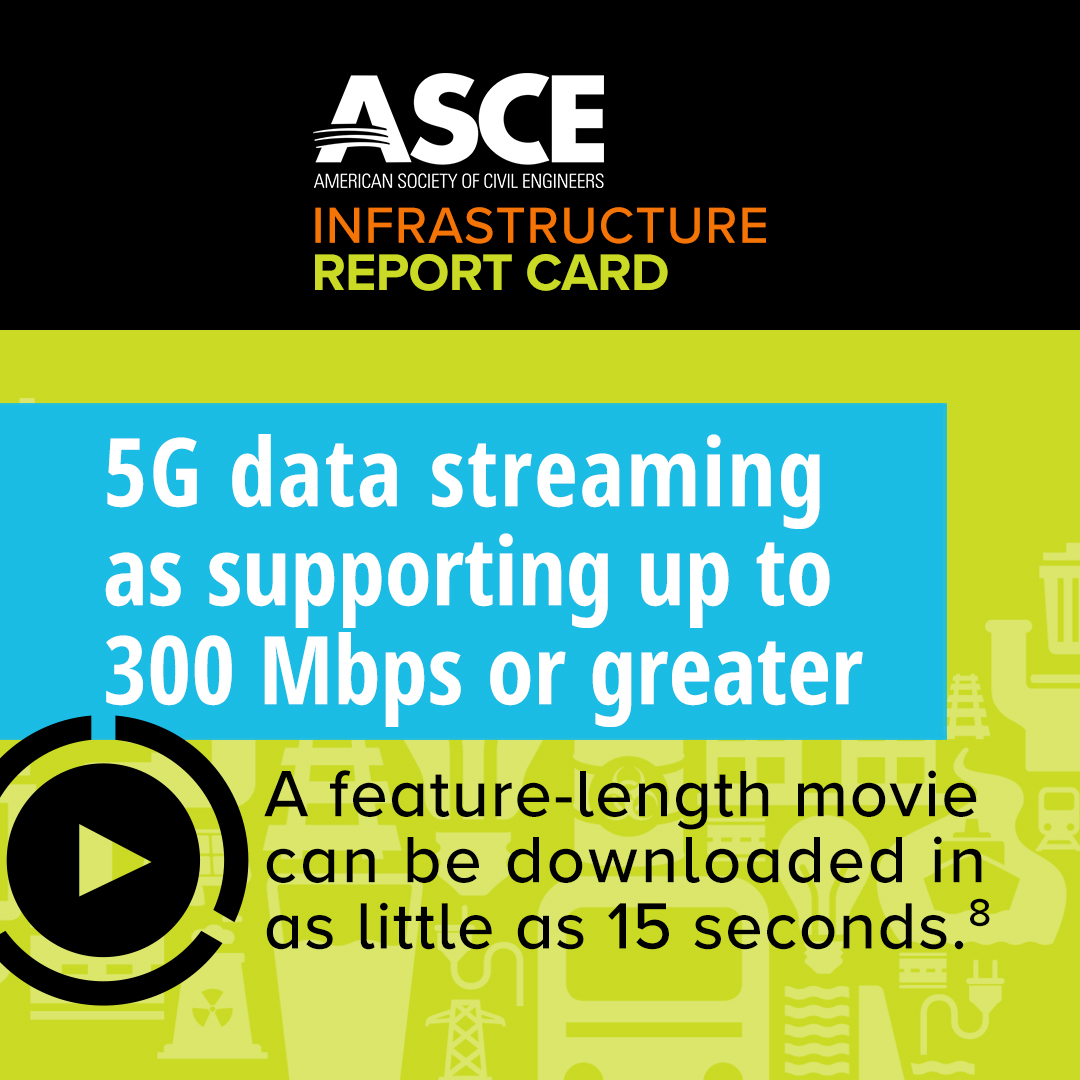Georgia, Inland Waterways, National Category
Startup Uses Drone for Cleaning Water, Collecting Data

Broadband, a generic term for high-speed internet access, enables students of all ages to learn online and businesses to reach customers and co-workers; facilitates electronic and verbal communications; provides access to healthcare and job openings; and can be the deciding factor of where a company chooses to expand. When the coronavirus pandemic forced millions of Americans to stay home in 2020 and 2021, an estimated one in five school-aged children lacked the high-speed internet connection needed to access lessons and other materials.

have average connection speeds
lower than the FCC’s definition of broadband
school aged children lacked the high-speed internet connection
needed to access lessons and other materials
manage construction and design of utility poles, structures, and towers across the country that
will increasingly host 5G receptors
Ensure the updated maps required by the Broadband DATA Act are developed in a timely fashion and in close coordination with state, local, and private stakeholders, including service providers.
States and municipalities should develop broadband plans aimed at closing the gap in digital for all. These plans should foster stakeholder engagement; identify and remove limitations to improve data collection and mapping; support strategic buildouts and deployment efforts; and encourage the preservation of conduit and right of way for future technologies.
A coordinated approach is needed to ensure broadband is built out to underserved populations, similar to the Rural Electrification Act of 1936.
Co-location of broadband should be planned with existing infrastructure, especially in the instance where public funding is provided. This includes above-ground infrastructure and the codification of “dig once” policies where service providers install broadband conduit as other infrastructure is installed.
Enact and enforce codes and standards to ensure that utility poles and other structures that support 4G/5G and future telecommunications equipment are structurally sound, reliable, and resilient.
 Definitions
DefinitionsWired or wireless data streaming (internet) operating at speeds of at least 25 megabits per second downstream, 3 megabits per second upstream.7
4G data streaming at approximate speeds between 12 and 36 megabytes per second. This equates to a roughly six-minute download time for a feature-length movie.
5G data streaming as supporting up to 300 Mbps or greater. A feature-length movie can be downloaded in as little as 15 seconds.8
Wired technology that converts data-carrying electric signals to light, which can then be transmitted through glass fibers approximately the diameter of human hair. According to the FCC, fiber transmits data at speeds far exceeding current DSL or cable modem speeds, typically by tens or even hundreds of Mbps.
Data streaming (internet connection) to a home or business connects between the customer’s location and the service provider’s facility. Wireless broadband can be mobile or fixed.
The FCC defines satellite broadband as another form of wireless broadband, useful for serving remote or sparsely populated areas. Speeds can be slower than DSL and cable modem, but 10 times faster than the download speeds of dial-up internet access. Extreme weather conditions can disrupt satellite service.
1 Pew Research Center, “Nearly one-in-five teens can’t always finish their homework because of the digital divide,” October 26, 2018.
2 National Association of Counties, “Understanding the True State of Connectivity in America,” February 2020.
3 Multichannel News, “Pai: FCC Lacks Resources to Implement BROADBAND DATA Act,” March 11, 2020.
4 The Center for Public Integrity, “Rich People Have Access to High-Speed Internet: Many Poor People Still Don’t,” May 12, 2016.
5 CTIA, “2019 Annual Survey Highlights,” June 20, 2019.
6 Federal Communications Commission Press Release, “FCC Launches $20 billion rural digital opportunity fund to expand rural broadband deployment,” January 30, 2020.
7 Federal Communications Commission, “FCC Finds U.S. Broadband Deployment Not Keeping Pace,” Report; Notice of Inquiry.
8 Federal Communications Commission, 5G FAQs, Accessed on December 13, 2020.
Photo Attributions
